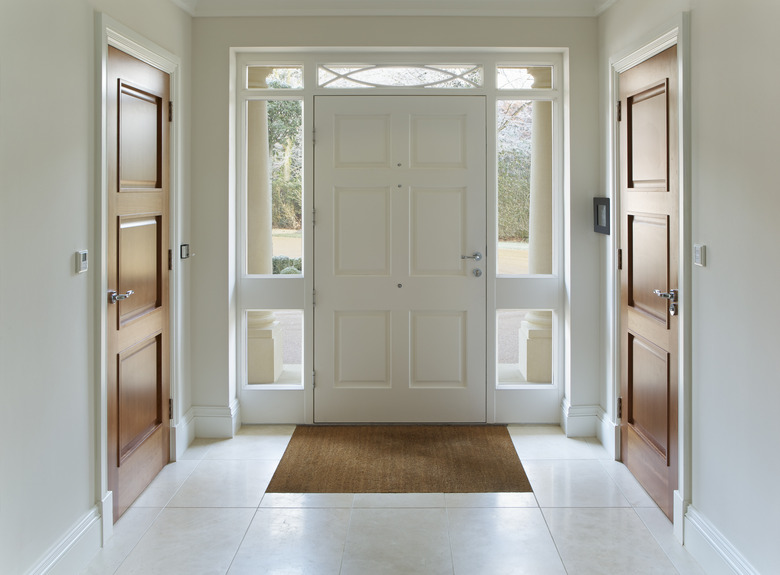Parts Of A Door Frame
A door frame incorporates a number of standard parts, some of which are hidden when the wall is covered and the door is in place. The door jamb is one of the most visible door pieces — so much so that people sometimes confuse it with the frame itself. However, behind the jamb and inside the wall, the structural, hidden part of the door frame is an important part of the door anatomy. It supports the jamb as well as the part of the building that's over the door.
The Visible Part of the Door Frame
The Visible Part of the Door Frame
If you take down the door and stand in the opening, the components of the frame you see above you, below you and on either side are as follows:
The jamb technically consists of the two upright planks of wood on either side of the opening and the horizontal one along the top. Carpenters sometimes call the uprights the side jambs to distinguish them from the horizontal one on top, but that actually has another name.
The head is the name for the horizontal plank that borders the top of the frame. It may also be variously identified as the top jamb or head jamb.
The sill is the horizontal component of the door that's attached to the floor. It's also known as the threshold, and you typically find it only on exterior doors. The bottom track of a sliding patio door is technically a sill.
Stops are narrow strips nailed to the faces of the side and head jambs in the approximate center. They're usually rounded on one side and flat on the side that contacts the door. Their purpose is to stop the door from swinging the wrong way.
Casing is the trim nailed to the jamb and the wall. It's there to hide the gap between the jamb and the part of the door frame that's behind the drywall.
An astragal is a vertical piece of wood that runs vertically in the middle of the door opening from the sill to the head to separate the door panels when two are hanging in the same frame.
The Parts of a Door You Can't See
The Parts of a Door You Can't See
The structural parts of the door frame are constructed as part of the wall and are hidden by the wall covering. They include the following:
King studs extend from floor to ceiling on either side of the opening. Their spacing determines the width of the rough opening.
Jack studs extend from the floor to the top of the door opening. Also known as trimmers, they're attached to the sides of the king studs that face the door opening. Their purpose is to support the header.
The header is the horizontal piece of lumber that forms the top of the frame. Its thickness matches the stud width (2x4, 2x6, etc.), and its width may be anywhere from 2 to 12 inches, depending on the load above that it has to support.
Cripple studs are short lengths of 2x4 lumber that extend from the header to the top plate of the wall. They too are there to support the load over the door.
Parts You See on Most, But Not All, Door Frames
Parts You See on Most, But Not All, Door Frames
Door frames have various features to adapt them to certain types of doors.
The strike is technically part of the doorknob or lock assembly. It's the mortise on one of the side jambs covered by a metal plate, and it's where the barrel of the knob or deadbolt latches when the door is closed. You won't see a strike on the frame for a sliding, bypass or bifold door.
Hinge mortises are insets for the hinges. You'll see these on some new prefab door jambs. They simplify the job of hanging the door.
When weather stripping is present, it's attached to the flat side of the door stop. It provides a seal between the door and the stop when the door is closed.
